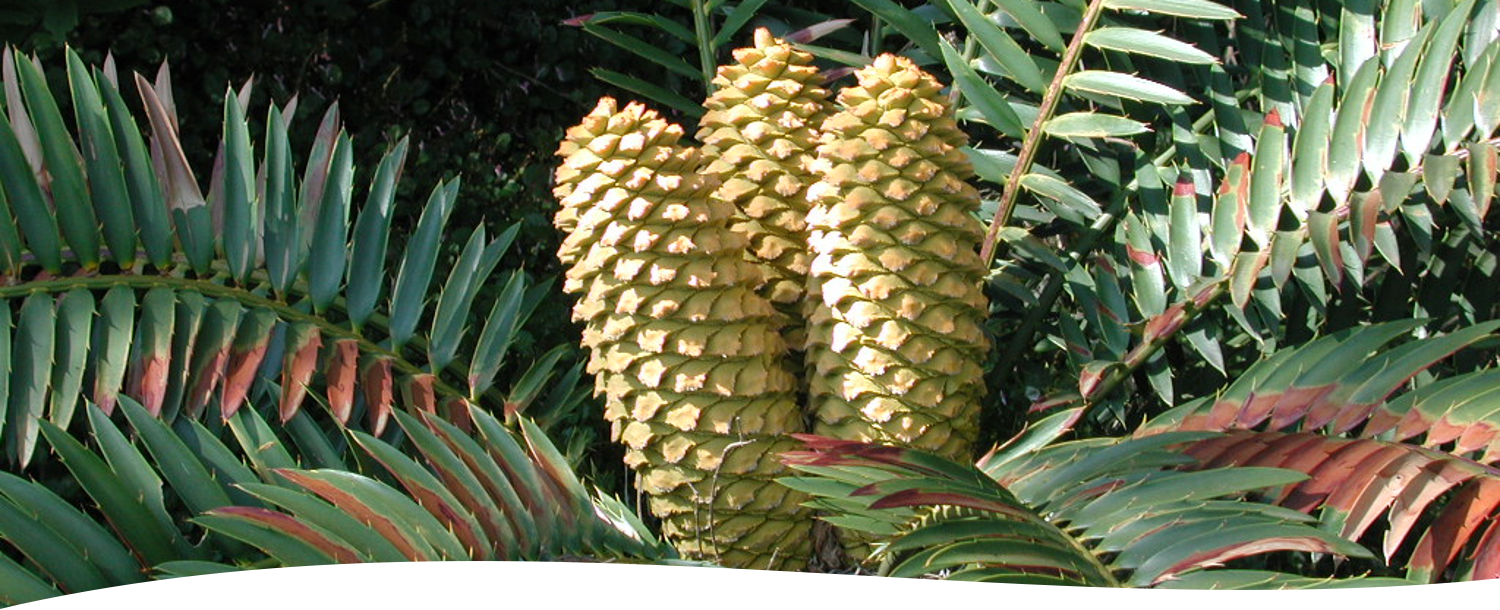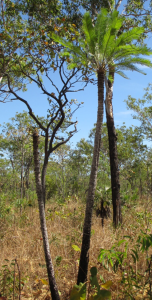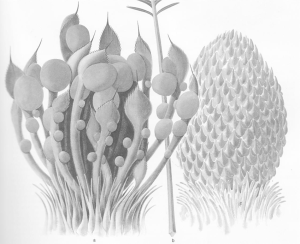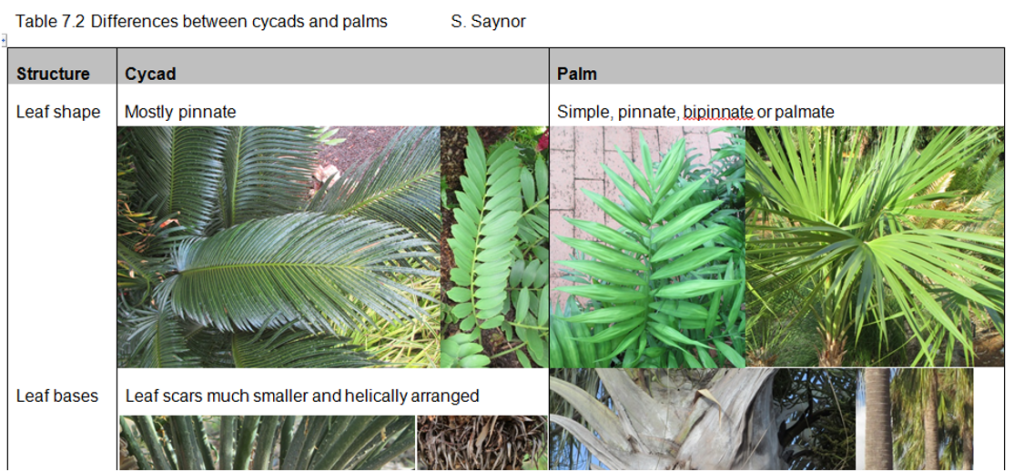67 Cycads

Cycads flourished during the time of the dinosaurs and were an important part of dinosaur diets. Most species disappeared with the dinosaurs, about 65 million years ago. The remaining 300 species that we see on Earth today in tropical and subtropical areas of the world were considered to be leftovers from that time. However in 2011 analysis of plant DNA and fossils showed modern species of cycad actually evolved from remnant cycads around 10 million years ago.

Cycads look a bit like palms. They have a stout, firm trunk with little or no branching. This is topped by a crown of large, hard, stiff, evergreen, mostly pinnate leaves.
Like many animals, cycads are either male or female.
This means some plants only grow pollen-bearing cone-like structures, while others only grow egg-bearing ones.
Having separate male and female plants prevents self-fertilisation – pollen from one plant must fertilise the eggs of a different plant. Pollen reaches female plants through wind and insects.
Cycad reproductive parts
- Female sporophylls with immature seed
- Part of a frond
- Male sporophylls

Differences between Cycads and Palms
Sometimes when we are first learning how to recognise plants it is helpful to have a chart which shows the difference between similar looking plants.

